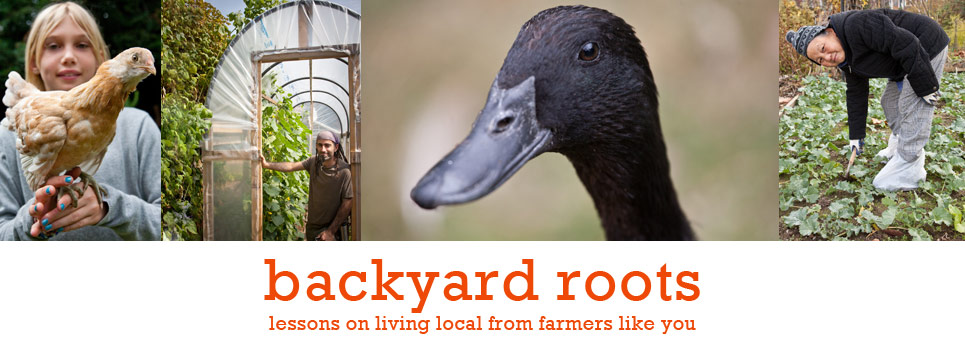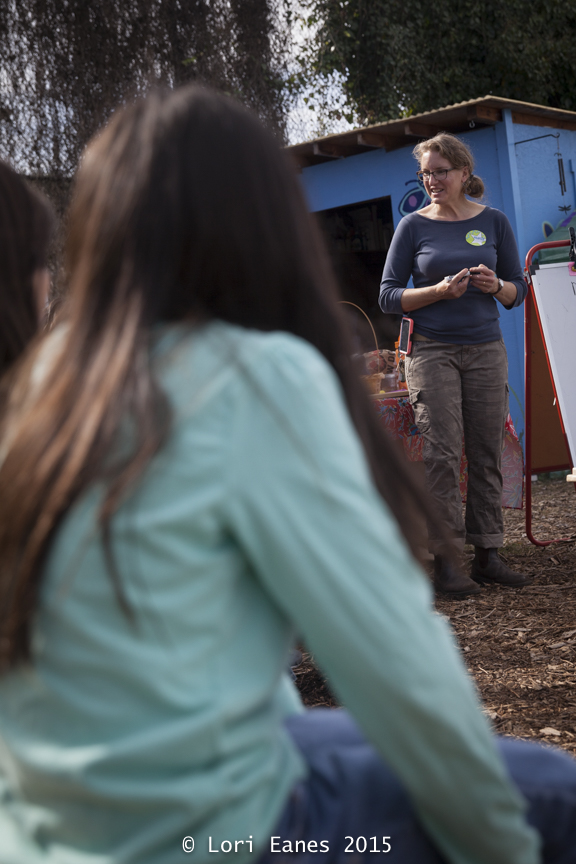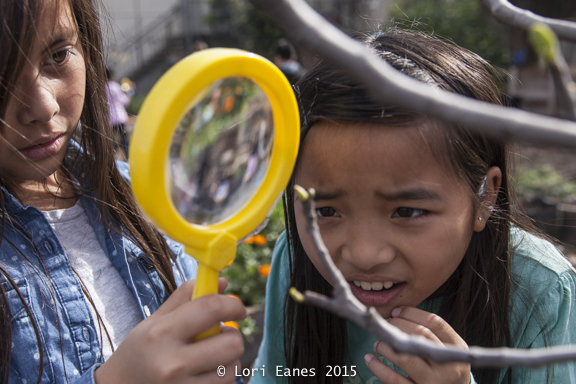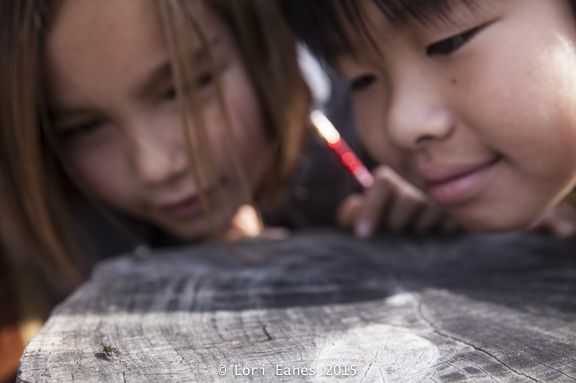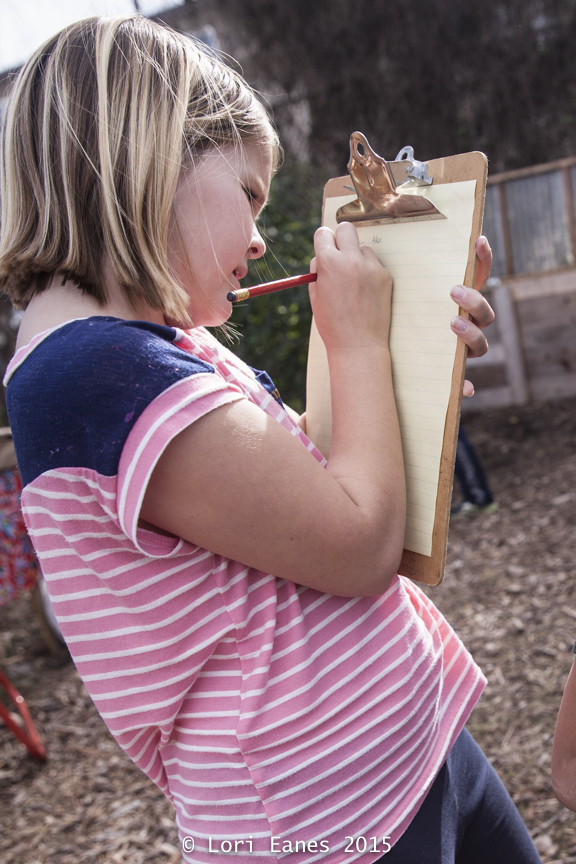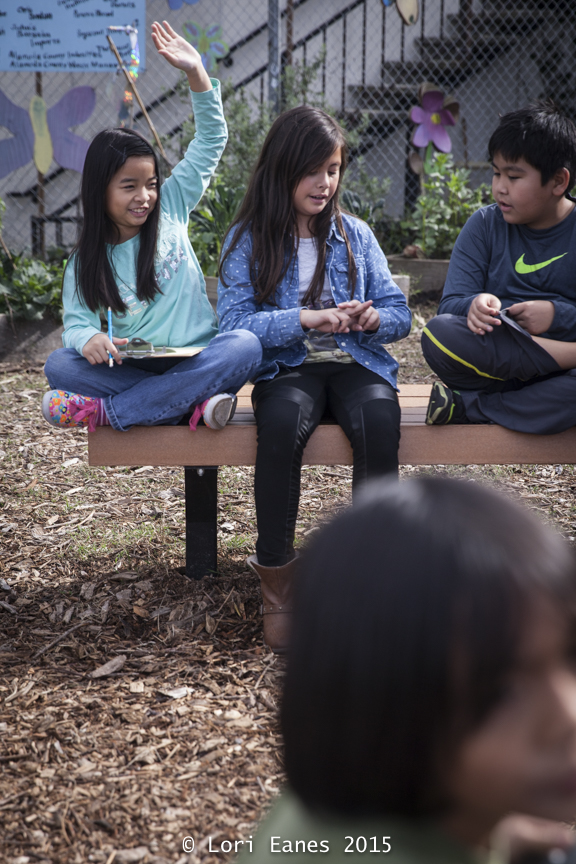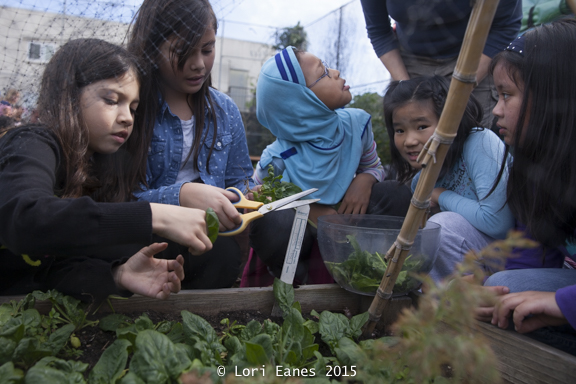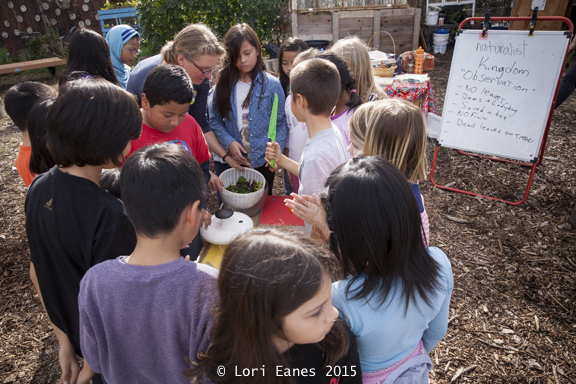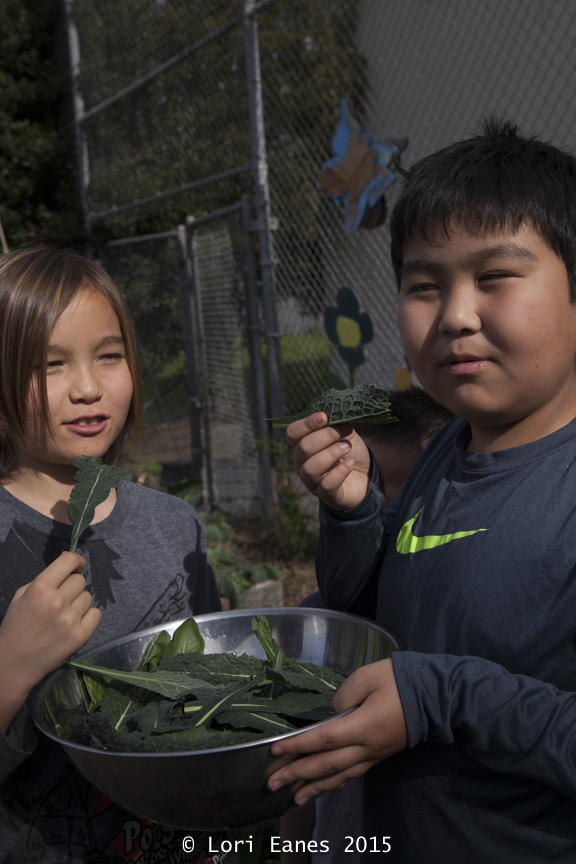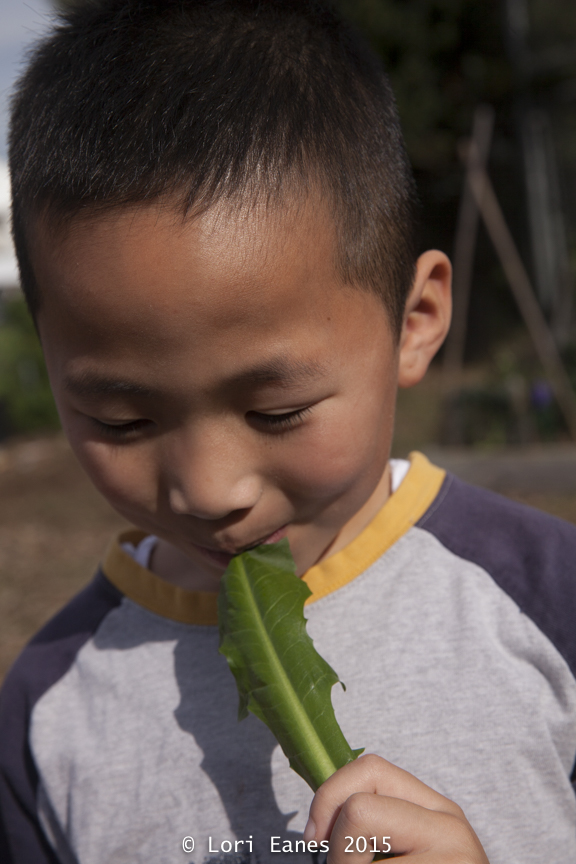Where does food come from? Suzanne Carter got a good laugh when she heard a first grader proudly proclaim that “honey comes from the honey bee tree.” Being able to teach kids first-hand about where food comes from is one of the reasons she volunteers at her son’s elementary school garden. Three days a week she works with 240 kids, teaching them gardening skills, botany, nutrition as well as geometry and math, all using the garden as inspiration.
The idea for a teaching garden started in 2011 with no budget but lots of community support. The school’s Go Green Committee came up with the plan to turn an unloved corner of the play field into an educational garden. In January of 2012, Alameda’s then supervisor Wilma Chan organized contractors to build a shed, and a local Boy Scout troop made raised beds. Later 175 people came out to a work party to help mulch, dig and plant.
Suzanne joined in right from the beginning working with a teacher to create the garden program. She graduated with an Anthropology degree but lately she has become more interested in plants. Besides volunteering at the schools garden program she also runs her own landscaping business, Urban Gardening. At the school’s gardening program she also helps write grants to get stipends for supplies.
When I visited last week, the winter garden was going strong with 13 raised beds of spinach, lettuces, kale, fava beans, herbs, edible flowers and more. They had a giant compost bin and a worm box, and activity area with benches and tree stump stools.
The third and fourth graders I met were observing evidence of winter in the garden, looking through magnifying glasses and taking notes on clipboards. The kids found that the fruit trees did not have fruit or leaves, but they did have buds. They were fascinated by the insects. Later they talked about their observations and then picked spinach, kale, Italian dandelion leaves, baby lettuce and edible flowers. Suzanne says the kids let her know what they are really interested in but she provides the basics first. “Sustainability, energy use and eating are the big three”, she says. At the end of class the kids helped make an organic gourmet salad that would rival one you’d find at an expensive restaurant. She says the kids have debated which of the vegetables is the best. Lately kale has been the winner.
